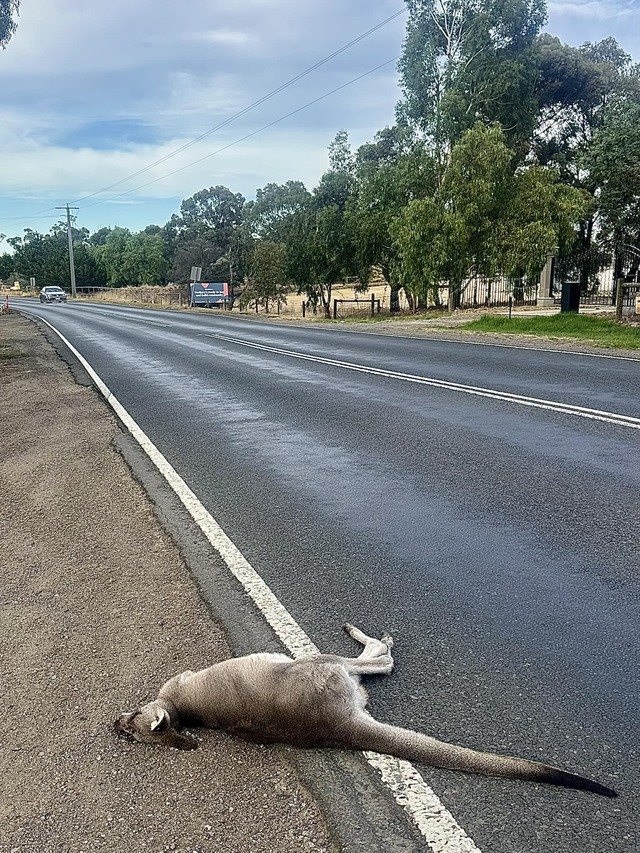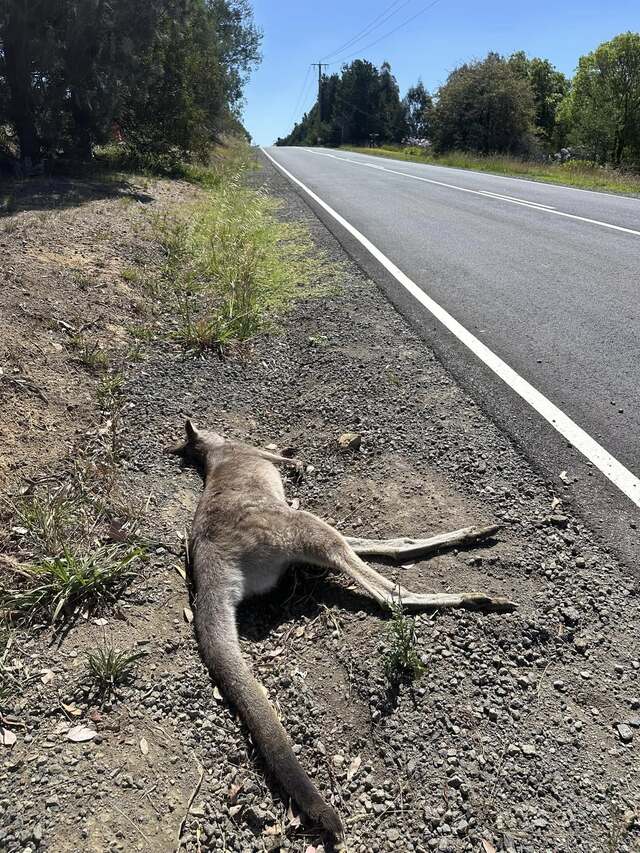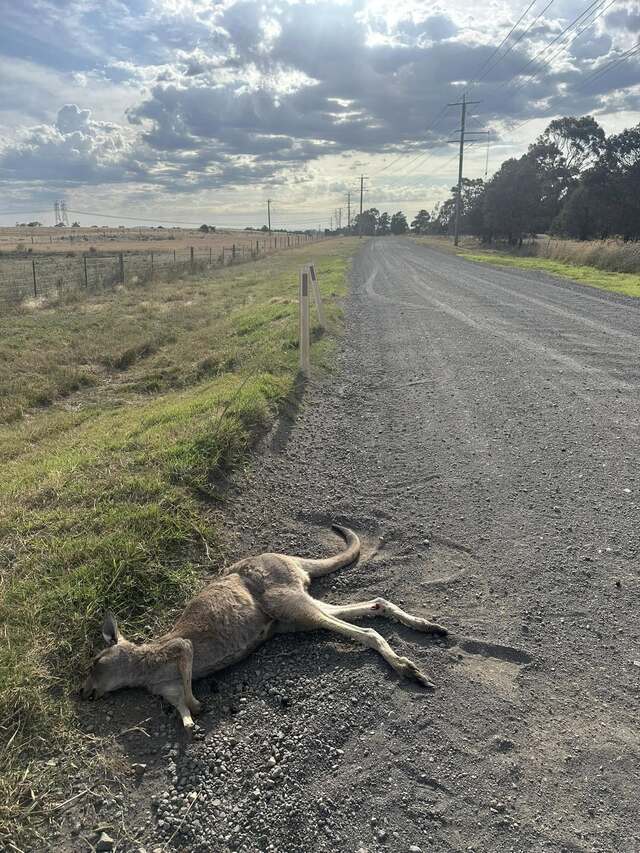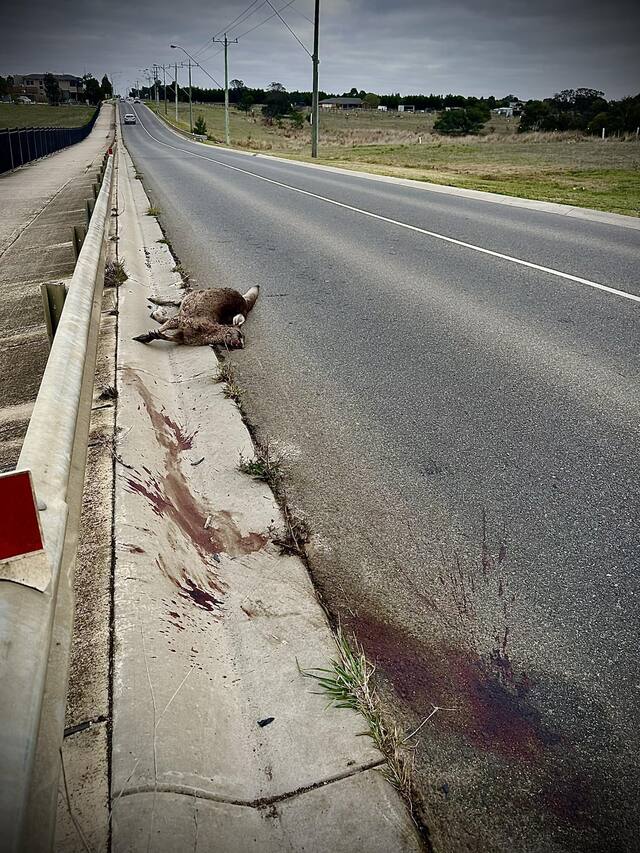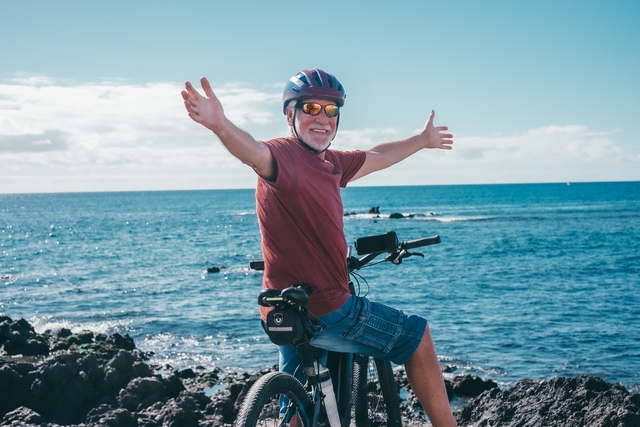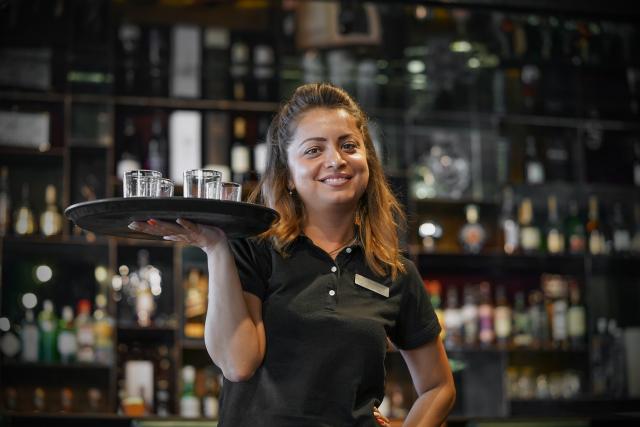A Victorian Parliamentary inquiry is delving into the impact of wildlife roadstrikes on rescuers and motorists. In Melbourne’s outer north, Sunbury, Oaklands and Somerton roads have become hotspots for collisions between animals and vehicles, in what wildlife rescuers are describing as “absolute carnage”, Georgia Tacey reports.
Sunbury Road has turned into a graveyard.
Body after body of kangaroos, some nothing but bones, others still clinging to life, after vehicles have collided with them.
In Sunbury, one of the highest reported suburbs for wildlife collisions across the state, the situation is well past breaking point.
Local volunteer wildlife rescuer Krysti Severi said she had been called out to the Sunbury area many times, describing Sunbury Road, Oaklands Road and Somerton Road as “absolute carnage”.
“There are definitely other rescuers that just go for a drive out to those specific roads because a lot of (wildlife collisions) there aren’t called in,” she said.
“They just go out there for pouch checks and that nothing on the side of the road is still alive.”
For commuters, she said it’s become traumatic.
“I know a lot of people that drive (Sunbury Road) regularly, it’s a regular commute to work,” Ms Severi said.
“I spoke to a guy and he said he has PTSD from driving that road to work.
“He drives to the airport every day for work. He is tailgated, he is flashed because he’s trying to drive conservatively to stop if anything comes out in front of him.”
It’s a hotspot for wildlife collisions.
In the Hume municipality, there has been a 137 per cent increase in reported kangaroo collisions over the past five years.
Sunbury recorded the highest number of animal collisions in Victoria and the second highest in Australia in 2023, according to analysis from insurer AAMI.
In the past five years, the reported collisions with kangaroos have jumped significantly in Sunbury, from 75 in 2019 to 203 in 2024.
In Hume as a whole, it has massively increased from 485 in 2019 to 1150 in 2024.
Metro Trains also said the Sunbury Line has the highest volume of wildlife collisions with trains across its network.
“You get to a point where you’re like ‘what is happening here? Why is this happening?’” Ms Severi said.
“There are so many bodies out here, and it’s in an area that if you concentrate you’ve got visual on both sides (of the road).”
Sunbury Road, Oaklands Road and Somerton Road are all 80km/h, which is something Ms Severi wants changed.
Hume council is also seeking to change the speed limit on these roads, with the idea part of council’s submission into state parliament’s Inquiry into Wildlife Roadstrike in Victoria.
The inquiry, chaired by Animal Justice MP Georgie Purcell, will focus on the issue as a whole, through relevant legislation and regulation to monitor wildlife roadstrike, promote driver education and raise public awareness.
It will also examine the involvement, training and expenditure of paid and volunteer rescue and rehabilitative organisations and individuals, as well as any new and emergency technologies and infrastructures to prevent roadstrikes.
The impact on Victorian motorists will also be considered.
“The overworked wildlife sector is burnt out and many volunteers are forced to work multiple jobs to self-fund their transport and rescue equipment in order to perform the work,” Ms Purcell said.
“This inquiry will seek ways to support retention and mitigate obvious failings on our road networks, as well as explore new technology, to keep both animals and motorists safe.”
The pubic, including councils, organisations, rescuers and motorists, was invited to make a submission to the inquiry.
Hume’s submission included nine recommendations for the state government to consider implementing to help the issue.
These included establishing a centralised wildlife population and roadstrike database, the establishment of regional kangaroo management networks, and most notably, to introduce wildlife roadstrike triggers for speed limit reviews.
In its submission, council notes one of the challenges in its municipality is the rapid urban development in suburbs like Sunbury, Craigieburn, Kalkallo, Greenvale and Mickleham.
New housing estates, road networks and commercial zones are being established adjacent or between historical habitat areas and conservation reserves, disrupting established movement corridors for wildlife.
This leads to habitat fragmentation and land-locking, increased contact between people and wildlife, and higher traffic volumes on newly constructed or expanded roads near habitat areas, council said.
Currently, new road projects do not have wildlife-sensitive design features, as wildlife movement corridors aren’t identified early in the planning process.
Council said reducing vehicle speed is one of the most effective and immediate measures to lower the likelihood and severity of wildlife collisions, which has formed its recommendation to implement wildlife roadstrike triggers.
Currently, speed reductions are only considered in response to repeated human crashes or fatal traffic incidents – not animal collisions.
Council said in its submission it is unable to implement localised speed reductions without meeting the narrow criteria set by the Department of Transport, even when supported by data or community reports.
Ms Severi said it felt like no solution would be reached, adding that she and other wildlife rescuers are fed up.
“There has to be something done in that area because it is an absolute massacre out there,” she said.
“This is getting to a breaking point for the volunteers because we could honestly go out there every single day of the week multiple times a day.”
She hopes change will come soon, so sheand other volunteers can continue the important work they do.
“It’s obviously a lot of emotional baggage we carry around every day.
“We see things that a lot of people shouldn’t have to see. We see things a lot of people wouldn’t even think an animal could suffer that sort of injury and still be alive.
“So support your local volunteers that are out there doing this out of their own pocket and out of their own mental health as well.”
Victorian Kangaroo Alliance president Alyssa Wormald welcomed the inquiry, as well as the recommendations Hume has proposed.
“We desperately need innovative strategies to keep wildlife and motorists safe on our roads, so we look forward to this inquiry producing urgent solutions that value and respect wildlife,” she said.
“We also hope for greater recognition and support for wildlife volunteers who shoulder an immense and traumatic workload responding to victims of wildlife roadstrike.”
To report a sick, injured or orphan native animal across the state, you can call Wildlife Victoria’s 24/7 emergency response service on 8400 7300.

